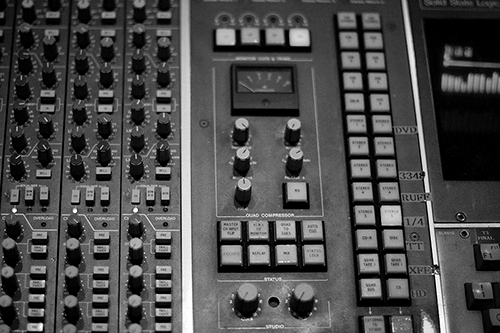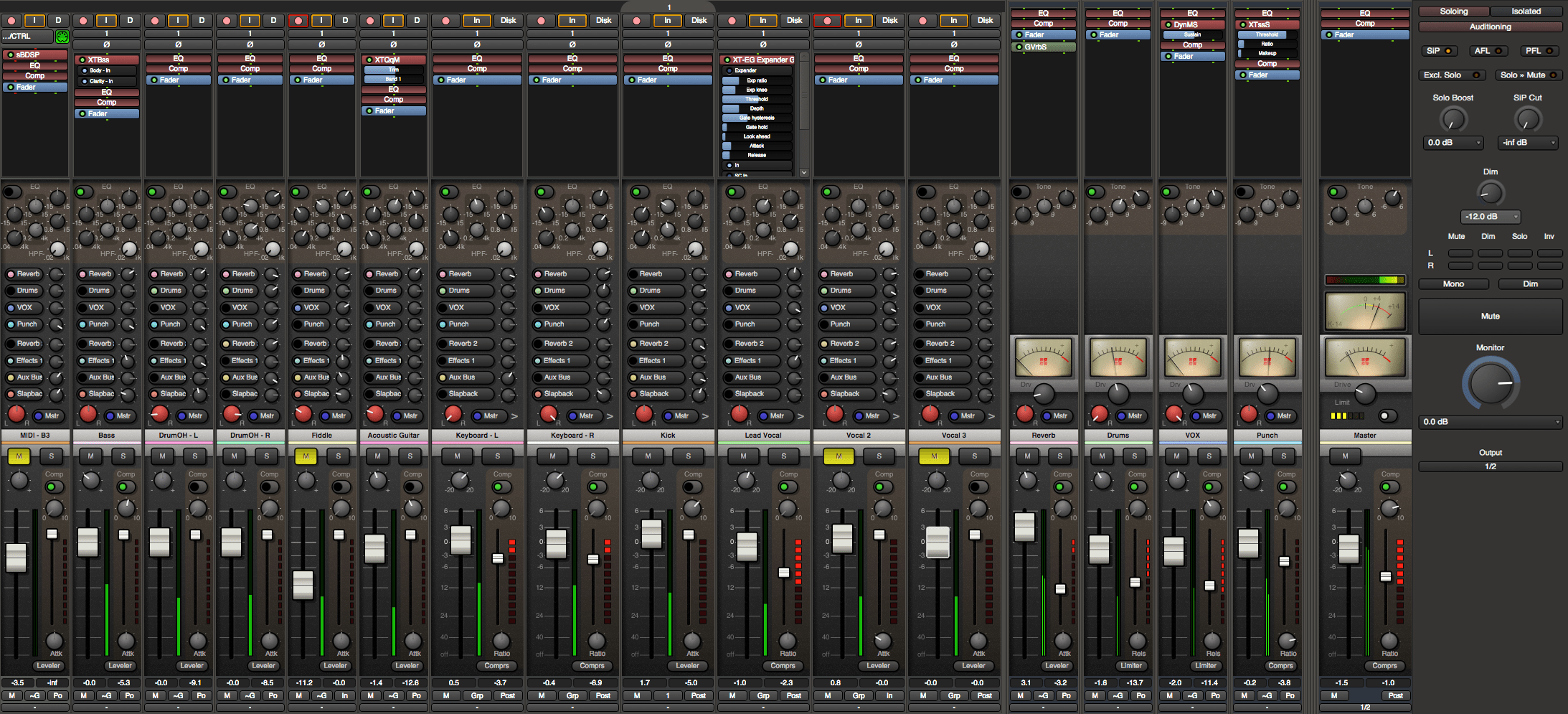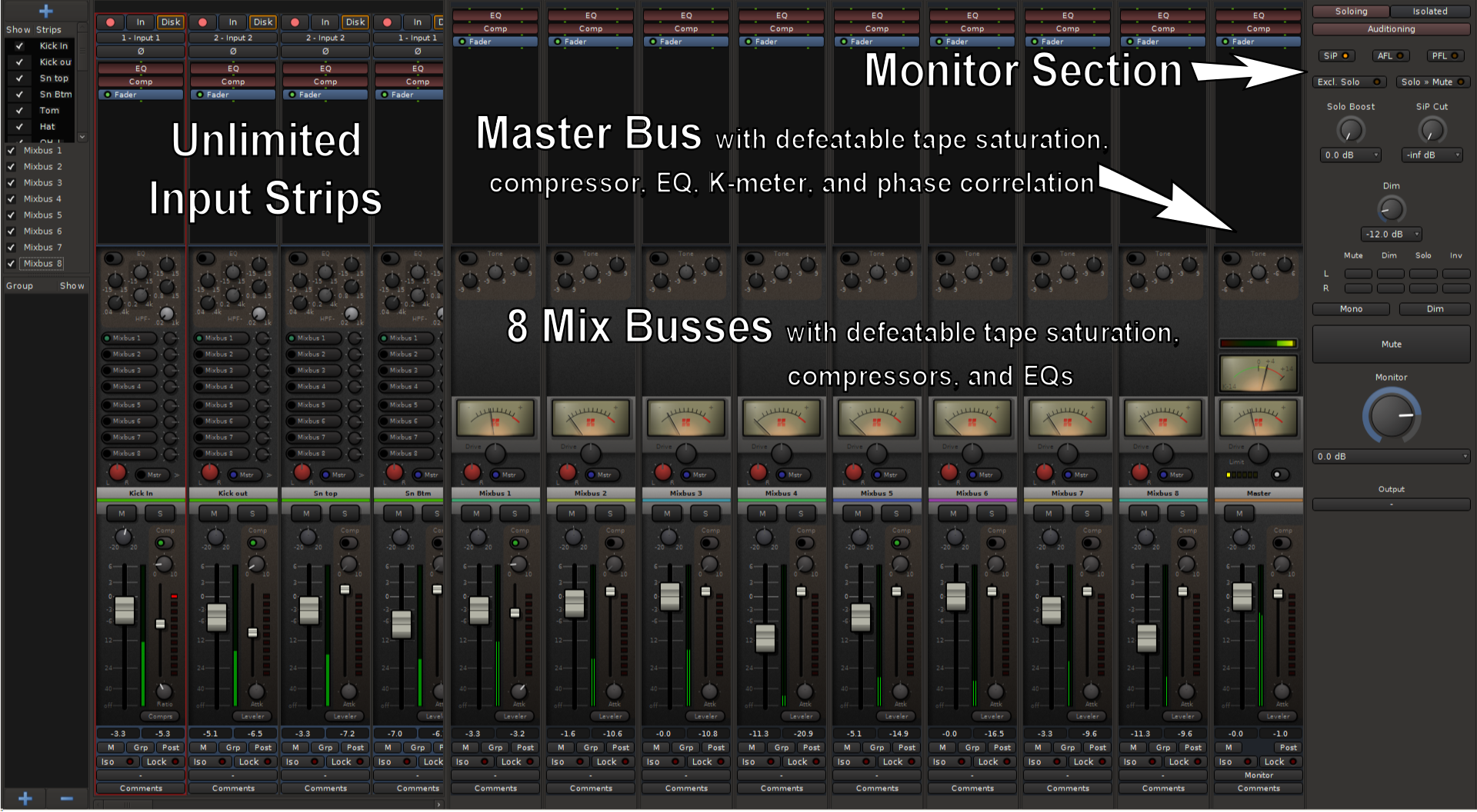

If you aren’t sure how to do this, we have an article about it. In Logic Pro X, the “Stereo Output” fader is the final output fader, but you should also create a stereo mix bus with a stereo Aux Channel. The ability to do this easily ensures you don’t get too deep into your mix before realizing there may be problems you need to fix. The best way to check for proper mono compatibility is to occasionally toggle your mix back and forth between mono and stereo during the mixing process. Certain effects or stereo processing, like chorus, phasing, flanging, doubling, and stereo imagers can cause certain sounds or frequencies to disappear when the mix is folded down from stereo to mono. A mix will always sound somewhat different in mono, but we don’t want the important instruments or vocals to disappear or weaken too much. We hear the term “mono compatibility” often, which means that the mix should sound basically the same in mono as in stereo.

Most DAWs do not have convenient built-in studio monitor functions, so we will cover that situation here.Ĭhecking your mix in mono can be an important step of mixing. A few DAWs, like Cubase Pro and some consoles, like UAD’s Console and some monitor controllers provide for a mono monitor function. What isn’t always easy, however, is momentarily switching between stereo and mono on the final output. This is easily done in most DAWs by inserting effects processors on the stereo output channel. It is common practice to incorporate some stereo mix bus processing on the full mix during the mixing process. Easy Summing to Mono to Check Mono Compatibility

These techniques are representative of the workflow in Logic Pro, but can easily be applied to any DAW. This is a simple signal flow that generally works well, but there are advantages to mixing through a master subgroup bus before it reaches the final stereo output. Most DAWs default to routing channels in your mixer directly to a physical/monitor output.


 0 kommentar(er)
0 kommentar(er)
